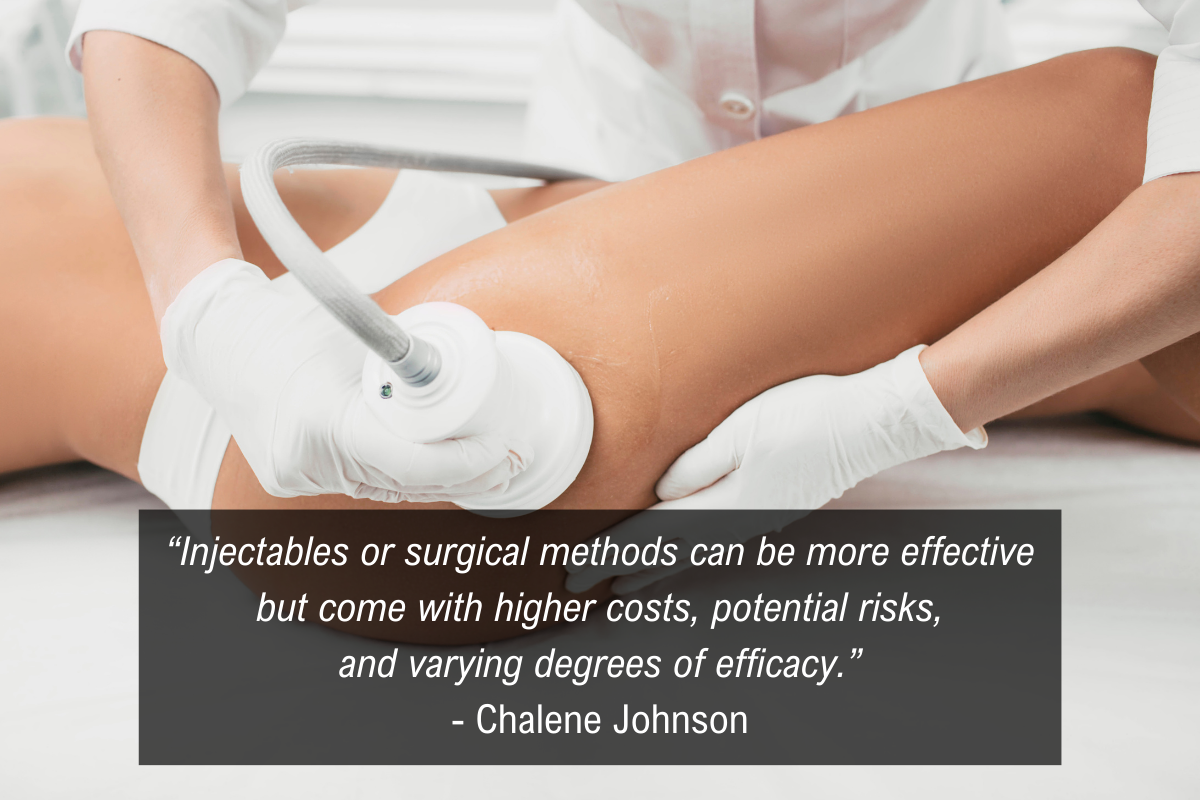Cellulite, an almost universal concern, especially for women, can often lead to frustration and confusion about effective treatments. Despite the array of products and services marketed towards reduction, from lotions and serums to more intensive medical procedures, finding what truly works can be overwhelming. In this blog, we're going to dive into the reality of cellulite treatments, including FDA-approved advancements, and provide clarity on what can realistically be expected from these solutions.
Understanding Cellulite: The Basics
Firstly, let's get a grasp on what cellulite really is. Contrary to popular belief, it isn't just a simple case of excess fat but involves the structure of the skin and underlying connective tissues. Here's a simplified breakdown:
- Skin Layers and Fat: Underneath our skin is a layer of fat, followed by a crucial layer known as the septae. These are the fibrous bands that connect our skin to the muscles underneath.
- The Role of Septae: In cellulite formation, these septae pull down on the skin, creating dimpling. This is more pronounced in women due to the arrangement of these bands, which allows for more fat to push through.
- Genetics and Hormones: Genetics play a significant role in development, as do hormonal factors. A higher estrogen level often correlates with more pronounced cellulite.
Lifestyle Impact on Cellulite
Implementing certain lifestyle changes can help in reducing the appearance of cellulite. These include:
- Improved Diet: A healthy, balanced diet can reduce inflammation and water retention.
- Regular Exercise: Strengthening the muscles, especially in the lower body, can make the skin appear smoother.
- Hydration and Sleep: Adequate water intake and quality sleep are essential for overall skin health.
Topical Treatments: Do They Work?
The market is flooded with creams and serums claiming to eradicate cellulite. While some may temporarily reduce its appearance by decreasing swelling or water retention, they do not physically alter the septae or fat layers.
Fascia Blasting: A Viable Option?
Fascia blasting, a technique involving a massage-like tool, claims to break up fascia and, consequently, cellulite. While it may improve circulation and reduce the appearance, the results are typically temporary and require ongoing treatment to maintain.
Advanced Medical Treatments
In recent years, several advanced treatments have emerged, including FDA-approved options. These typically involve more invasive procedures such as injectables or even surgical methods like subcision. These treatments can be more effective but come with higher costs, potential risks, and varying degrees of efficacy depending on individual cases.
Making Informed Choices
Given the array of options available, it's crucial to approach cellulite treatment with realistic expectations. Understand that no treatment can guarantee complete removal, and results vary widely among individuals. Before opting for any procedure, thorough research and consultations with medical professionals are essential.
While cellulite is a common and often frustrating issue, it's important to approach its treatment with a balanced perspective. Whether opting for lifestyle changes, topical treatments, or exploring advanced medical procedures, doing so with informed expectations and self-compassion is key. Remember, cellulite is a normal part of many people's bodies, and addressing it should be about feeling confident and comfortable in your skin.
Listen to episode #820 of The Chalene Show for more insights 🎧👩⚕️👍





